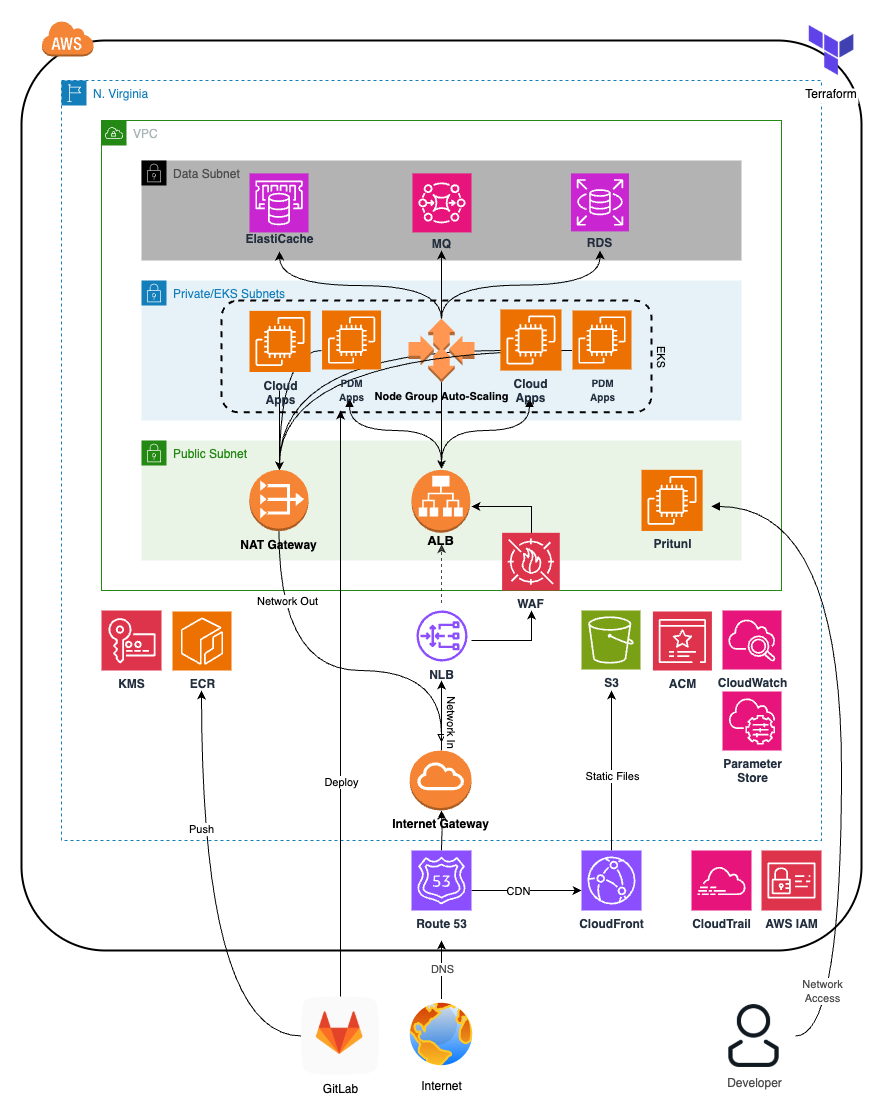
Customer Challenge
Project Synergy is a long-established leader in prototype and pre-production operational solutions within the automotive sector. Over the past 20 years, it has become a trusted partner of the biggest OEMs in the automobile manufacturing business, supporting more than 200 prototype build events. As the automotive industry embraced rapid digitization and tighter development cycles, Project Synergy’s traditional systems struggled to meet the demand for speed, scale, and security.
- Their challenges were multi-faceted: Legacy infrastructure lacked scalability, resulting in deployment bottlenecks during peak load periods. Manual provisioning and absence of Infrastructure as code practices led to configuration drift and increased downtime. Security vulnerabilities persisted due to limited container image scanning and lack of workload isolation. Observability was insufficient teams had minimal visibility into system health, causing delays in issue detection and resolution. The organization needed robust CI/CD pipelines to improve deployment velocity and reduce human error. A scalable multi-tenancy model was required to onboard external collaborators and internal business units without resource contention.
Partner Solution
To address these issues, Project Synergy partnered with AWS to build a cloud-native infrastructure centered around Amazon Elastic Kubernetes Service (Amazon EKS). The solution was engineered with a focus on scalability, automation, observability, and security. Core Components:
- Two dedicated EKS clusters were deployed in the us-east-1 region: one for production workloads and one for non-production environments.
- Infrastructure provisioning was fully automated using Terraform, ensuring consistency, version control, and repeatability across all environments. GitLab CI/CD pipelines were implemented to automate build, test, and deployment stages with support for canary and blue/green deployments.
Workloads were organized using Kubernetes namespaces and isolated via RBAC, network policies, and resource quotas to support soft multi-tenancy. Amazon Inspector and ECR image scanning ensured that only secure, vulnerability-free images were deployed. TLS termination and certificate management were handled using AWS ALB Ingress Controller and AWS Certificate Manager. Observability was significantly enhanced using a stack composed of Amazon CloudWatch, Prometheus, Grafana, Kubernetes Lens, and OpenTelemetry. IRSA (IAM Roles for Service Accounts) were used to enforce least privilege access for pods to AWS services. The architecture also incorporated Amazon RDS for persistent storage, AWS Fargate for serverless workloads, and Helm for deployment consistency.
Results and Benefits
The transformation delivered measurable improvements across several operational domains.
- Deployment Efficiency: Deployment times were reduced from over two hours to under ten minutes, thanks to GitLab CI/CD automation.
- Security Posture: IRSA, image scanning, TLS 1.3, and strict RBAC significantly elevated the platform’s security.
- Cost Optimization: By using spot instances for dev environments and Fargate for scalable workloads, compute costs were reduced by up to 30%.
- Observability: The integrated monitoring stack improved Mean Time to Detect (MTTD) and Mean Time to Resolve (MTTR) by over 60%.
- Tenant Isolation: Namespaces, quotas, and network policies enabled safe onboarding of external partners without service interference.
- Scalability: The platform now supports horizontal scaling, rapid cluster provisioning, and multi-account governance using Terraform modules.
- Innovation Enablement: Developers can test, deploy, and roll back features rapidly, encouraging experimentation and faster time-to-market. This modernized platform has positioned Project Synergy to support continuous innovation, meet the evolving needs of automotive prototyping, and drive operational excellence across teams and partner ecosystems.



